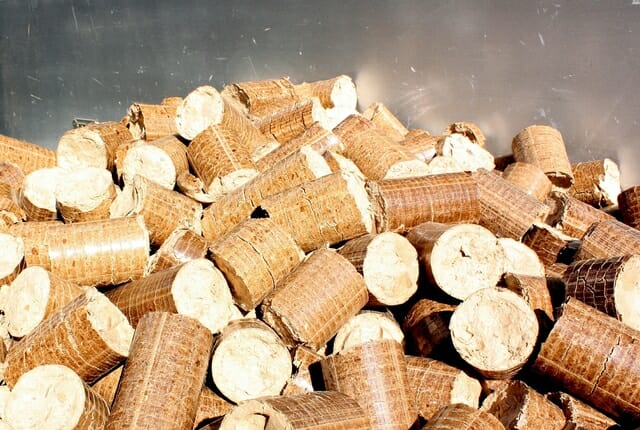
- September 27, 2021
- Attorney Matt Stoddard
- Premises Liability
Manufactured from plant matter recycled from other industries, wood pellets are an efficient, renewable fuel, and can also be used for pet bedding and a range of other applications.
Unfortunately, the process of transforming plant waste into stable, convenient pellets involves exposure to sawdust, flammable chemicals, and heat-producing machinery. The procedure for making pellets safely is delicate and complex, and all too often, pellet mills don’t do what it takes to keep their workers safe.
The National Fire Protection Association (NFPA) has published a Standard for the Prevention of Fires and Explosions in Wood Processing and Woodworking Facilities, containing extensive safety instructions. Although this code, also known as NFPA 664, is protected by copyright law and not accessible without restrictions, pellet manufacturers have a duty to obtain a copy and implement it in their facilities. The Occupational Safety and Health Administration (OSHA) recognizes NFPA 664 as a required standard and regularly cites pellet mills for their violations accordingly.
The entire code is devoted to preventing fires, and among many other detailed regulations, it requires that pellet mills and other woodworking facilities:
- Keep the temperature of wood and other flammable materials lower than the lowest recorded ignition point, adjusted for the material being used.
- Continuously remove dust and flammable residues from work areas and store them in covered containers.
- Not spray or coat pellets with flammable materials, except in separate rooms isolated from all other fire hazards.
When pellet plants ignore fire safety, workers end up injured or killed.
Workers Have Been Severely Burned at Hazlehurst Pellet Plant Multiple Times
In a recent example, four plant workers were hospitalized following an explosion at Hazlehurst Wood Pellets on September 2nd. Two of the four had to be airlifted to a burn unit. Though the explosion and fire are still under investigation, the local fire chief currently believes some of the wood may have overheated and hit a flashpoint.
The chief also noted in the same interview that the incident could have been much worse if not for the mill’s new fire suppression system. However, the mill reportedly installed that new fire suppression system partially in response to another flash fire in 2015 — a fire that was, in human terms, nearly identical to this one. In that case as well, four people were injured, two of them severely enough to be flown out for specialized treatment.
The new fire suppression system likely contained the fire, prevented a lot of property damage, and possibly saved even more people from being injured this time. However, it seems Hazlehurst Wood Pellets needs to take a close look at the underlying issues that have been allowing these ignitions to occur in the first place. Containing the damage to “just” the workers who were standing right next to the fire when it started is not an adequate safety goal.
Survivors of Wood Pellet Mill Fires Have Options for Compensation
Typically, people who are injured at work can only collect from their employers via worker’s compensation. There’s nothing wrong with pursuing this option, and it doesn’t disqualify you from pursuing others later. The trouble with worker’s comp is that it only covers a portion of medical expenses and lost wages, unlike a civil settlement, which can include compensation for all losses, financial and emotional.
In some situations, injured employees are allowed file civil suits as well as worker’s comp claims. This could apply to you if:
- Your worker’s comp claim was denied.
- Your employer injured you on purpose, rather than out of carelessness.
- An entity other than your employer contributed to your injuries. For example, if the machinery in the pellet mill was operating hotter than it was supposed to, you might be able to sue the machine’s designer.
If you are a survivor of the latest Hazlehurst Wood Pellet fire, or if you have been injured or lost a loved one in a pellet mill ignition factory accident, reach out to The Stoddard Firm today for a free consultation on your case.

 Matt Stoddard is a professional, hardworking, ethical advocate. He routinely faces some of the nation’s largest companies and some of the world’s largest insurers – opponents who have virtually unlimited resources. In these circumstances, Mr. Stoddard is comfortable. Mr. Stoddard provides his strongest efforts to his clients, and he devotes the firm’s significant financial resources to presenting the strongest case possible on their behalf. Matt understands that his clients must put their trust in him. That trust creates an obligation for Matt to work tirelessly on their behalf, and Matt Stoddard does not take that obligation lightly. [
Matt Stoddard is a professional, hardworking, ethical advocate. He routinely faces some of the nation’s largest companies and some of the world’s largest insurers – opponents who have virtually unlimited resources. In these circumstances, Mr. Stoddard is comfortable. Mr. Stoddard provides his strongest efforts to his clients, and he devotes the firm’s significant financial resources to presenting the strongest case possible on their behalf. Matt understands that his clients must put their trust in him. That trust creates an obligation for Matt to work tirelessly on their behalf, and Matt Stoddard does not take that obligation lightly. [